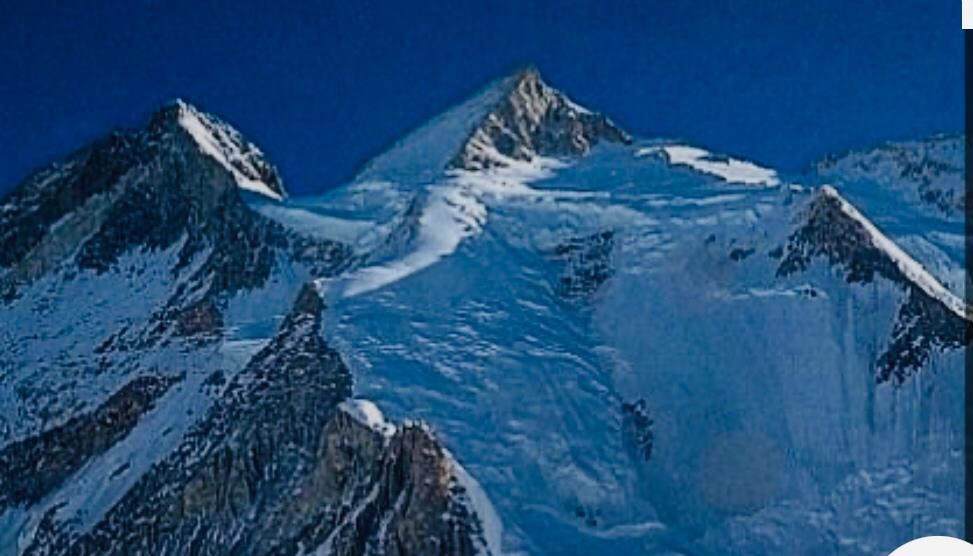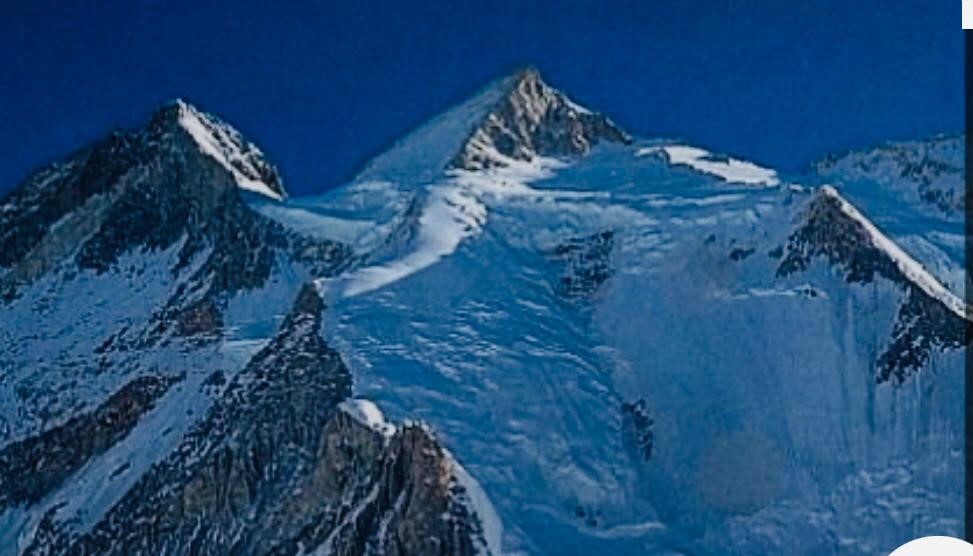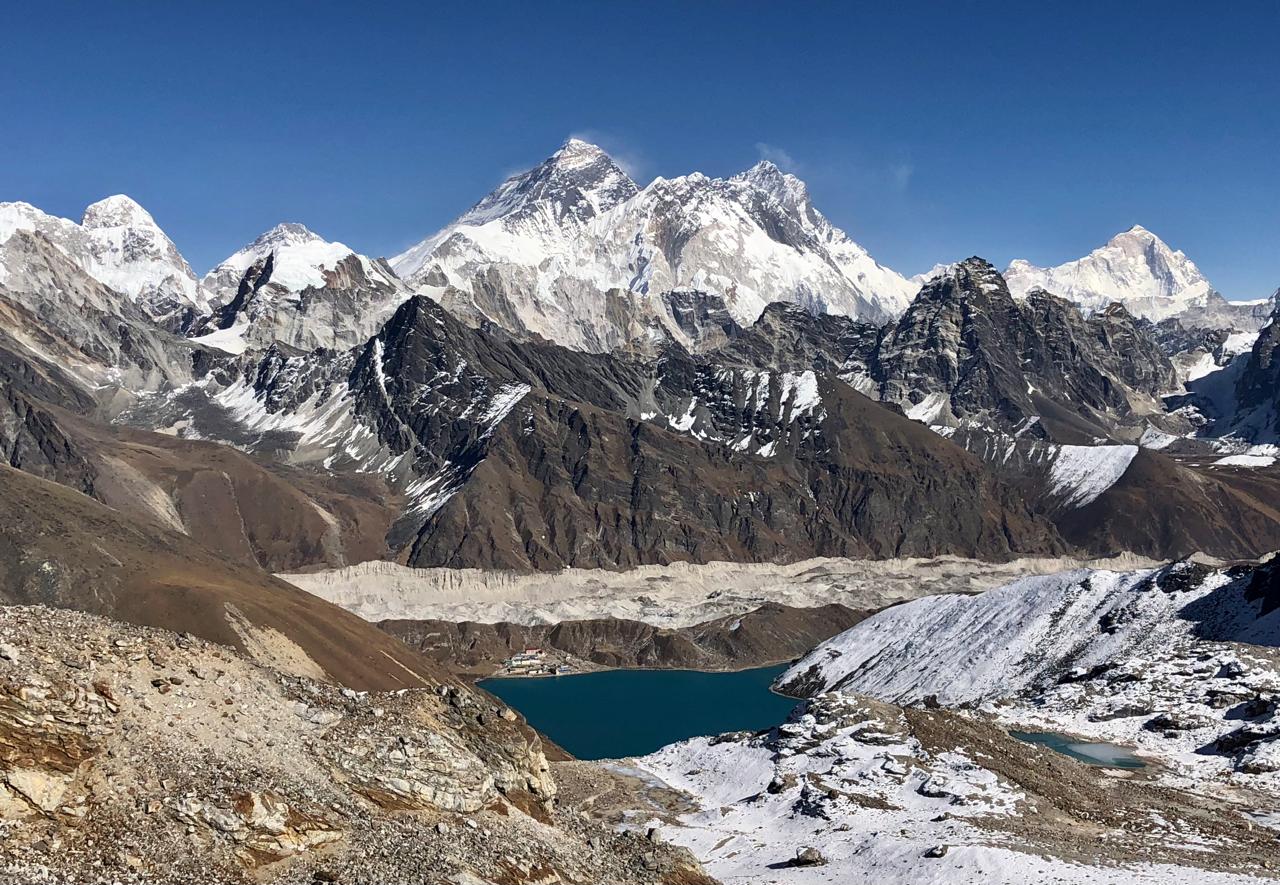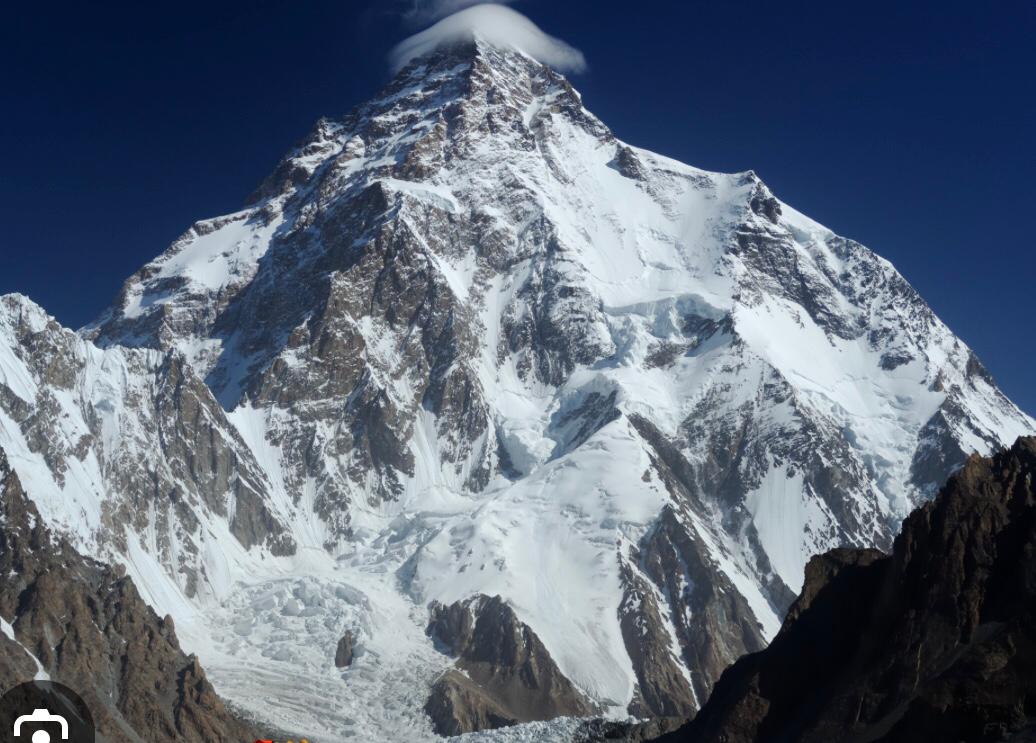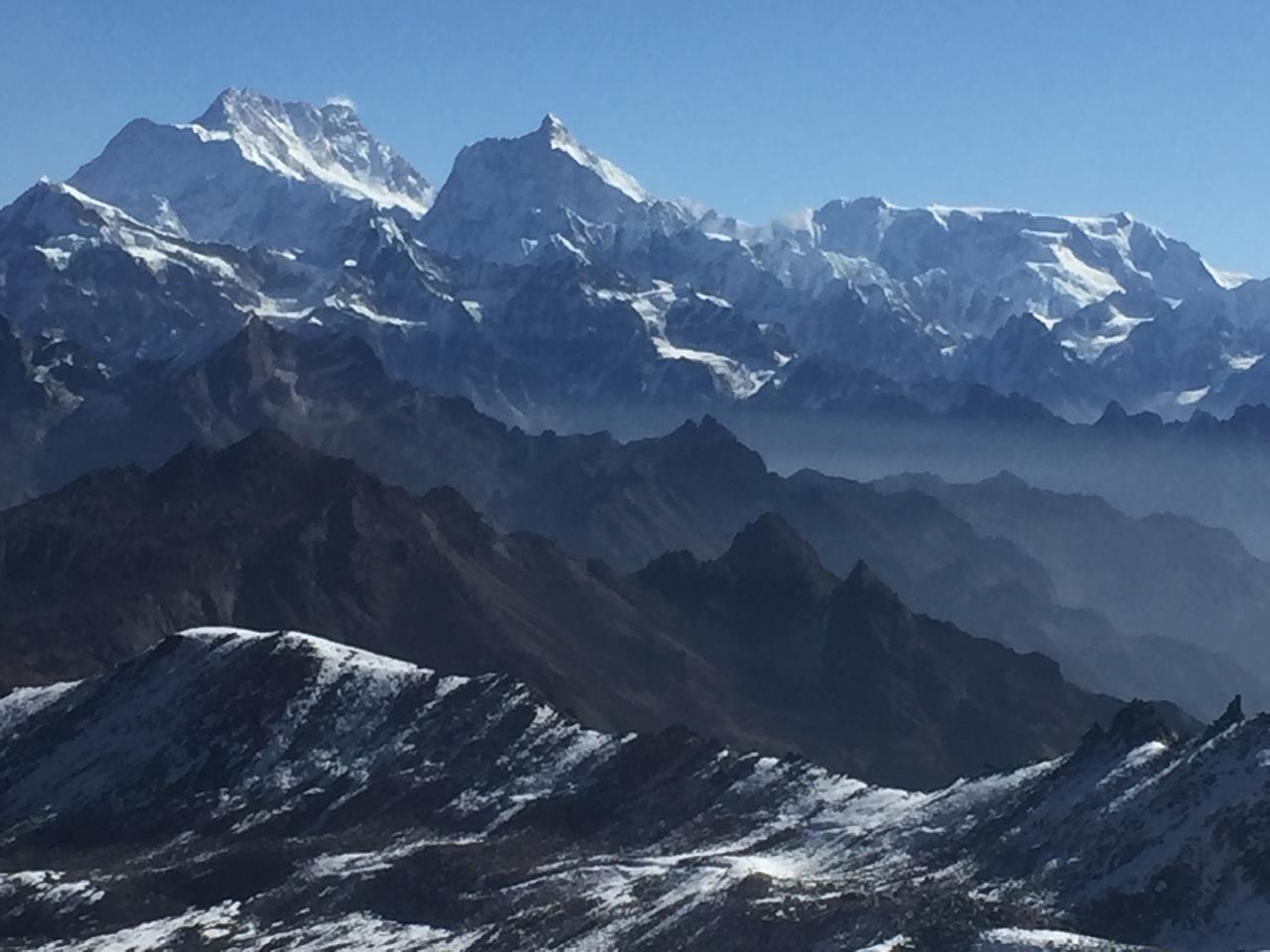Gasherbrum II, rising to 8,035 meters, is the 13th-highest mountain in the world and one of the most attainable among the 8000-meter peaks. Located in the remote Karakoram Range on the Pakistan–China border, it forms part of the Gasherbrum massif along with Gasherbrum I (Hidden Peak), III, and IV. Known in the Balti language as part of the “Shining Wall,” G2 captivates climbers with its striking pyramid-like form and sweeping views of iconic peaks such as K2 and Broad Peak. For many experienced alpinists, G2 serves as a natural introduction to high-altitude 8000-meter expeditions.
Although Gasherbrum II is considered less technical than many of its Karakoram neighbors, the climb remains a serious high-altitude endeavor. The standard route ascends via the southwest ridge and the Gasherbrum Glacier. Climbers must cross deep crevasses, ascend steep snow slopes, and cope with extreme cold and thin air. The route typically includes three high camps, Camp I, II, and III, with the final summit push beginning around 7,300 meters. The relatively straightforward nature of the route makes it popular among climbers, but it should never be underestimated.
Despite its reputation as a “friendlier” 8000er, Gasherbrum II poses many of the same dangers found on other high Himalayan peaks. Unpredictable weather, high winds, deep snow, and avalanche hazards are ever-present. Climbers need to be self-sufficient and capable of managing long days at altitude, while also being prepared for potential delays caused by storms or route conditions. The use of fixed ropes is common in steeper sections, and glacier travel skills are essential for navigating the approach and descent.
The expedition requires solid mountaineering experience, particularly at high altitudes. Strong physical endurance, mental resilience, and proper acclimatization are key to success. Many climbers use supplemental oxygen above Camp III, though some choose to climb without it depending on conditions and personal ability. The logistical complexity of reaching the Karakoram and the remoteness of the base camp add to the sense of adventure, making G2 not only a physical challenge but also a test of planning and perseverance.
For mountaineers seeking an 8000-meter summit without the extreme technical difficulty of peaks like K2 or Annapurna, Gasherbrum II offers an exceptional opportunity. It combines the thrill of high-altitude expedition climbing with awe-inspiring views, dramatic terrain, and the quiet majesty of the Karakoram wilderness. Whether as a stepping stone to more challenging climbs or a goal in its own right, G2 continues to draw ambitious climbers from around the world in search of a true Himalayan experience.
Trip Notes:
Best Time to Visit:
-
Summer (June to August): The most favorable weather for climbing in the Karakoram with stable conditions and longer summit windows.
Expedition Highlights:
-
Skardu (2,226 m): Gateway to the Karakoram, reached via a scenic flight or overland journey along the Karakoram Highway.
-
Concordia & Baltoro Glacier: One of the most dramatic glacier treks on earth, offering views of K2, Broad Peak, and Gasherbrum Group.
-
Base Camp (5,000 m): Stunningly situated beneath Gasherbrum II’s southwestern face.
-
High-altitude Climbing: Multiple high camps (Camp I, II, III), ascent over snow ridges, and the final summit push along the broad ridge of G2.
Climbing Route:
-
The standard route follows the Southwest Ridge via the Gasherbrum Glacier.
-
Camp I (6,000 m):
Reached through a crevasse-filled glacier; involves moderate glacier travel and rope use. -
Camp II (6,500 m):
Located on a steep snow slope; ascent requires the use of fixed ropes. -
Camp III (7,300 m):
Set just below the summit ridge; acts as the launching point for the summit push. -
Summit Ascent:
A long, gradual climb over snowfields, leading to an exposed summit ridge with spectacular views of the Karakoram range.
Difficulty Level:
-
Considered one of the more attainable 8000-meter peaks, suitable for climbers seeking their first 8000er.
-
Still requires solid mountaineering experience, especially above 7000m.
-
Challenges include:
-
High-altitude glacier navigation
-
Steep snow slopes with technical sections
-
Risk of avalanches, crevasses, and altitude sickness
-
Extreme cold and wind exposure above Camp II
Key Challenges:
-
Altitude & Acclimatization: Gradual ascent and proper rotation strategy are critical for a safe summit.
-
Crevasse Hazard: The Gasherbrum Glacier has many hidden crevasses, especially early in the climb.
-
Snowstorms & Whiteouts: Sudden snowstorms can obscure visibility and complicate navigation.
-
Extreme Cold: Temperatures at high camps and summit can plunge below -30°C.
-
Summit Ridge: The final stretch is long and exposed, requiring strong stamina and focus.
Training & Preparation:
-
Physical Fitness: Climbers must possess excellent cardiovascular fitness, leg strength, and endurance.
-
Climbing Skills: Proficiency in fixed rope use, ice axe arrest, and glacier travel are mandatory.
-
High Altitude Experience: Prior ascents of 6000–7000 m peaks strongly recommended before attempting G2.
Safety Considerations:
-
Avalanche Risk: Snow accumulation on steep slopes requires careful route assessment.
-
Weather Windows: Summit pushes must be timed with favorable forecasts to avoid whiteouts and high winds.
-
Climbing Equipment: High-quality mountaineering gear including insulated boots, oxygen systems, and safety ropes are essential.
-
Rescue Protocol: Emergency oxygen, satellite communications, and pre-established evacuation plans are included.
Permits Required:
-
Gilgit-Baltistan Trekking & Climbing Permit
-
Gasherbrum II Climbing Permit (via Ministry of Tourism, Pakistan)
-
Pakistan Visa with mountaineering endorsement
-
Liaison Officer assigned by Government of Pakistan
